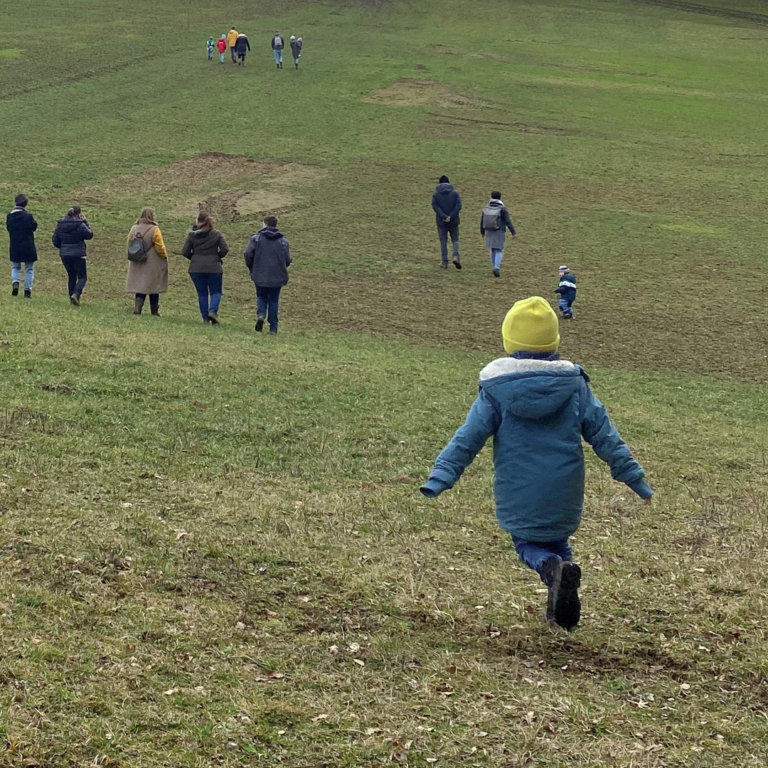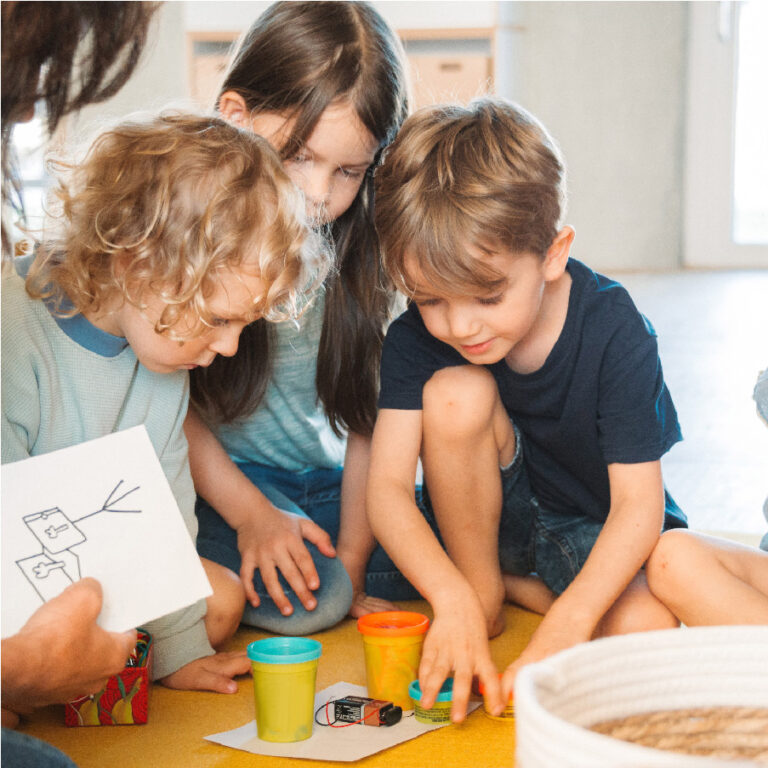
Ejection of the old hares – a ritual of transition.
Today we’re talking about these main characters: the old hares and the sly foxes. Because in the forest kindergartens it was “time to get out”.

In a daycare center with 180 children, there is likely to be a considerable surplus of energy! And if we could convert it all into… Well, that’s future talk, honestly. We aren’t quite there yet, but it’s something we keep in mind. For now, we are already taking steps to move our new facilities forward in terms of energy supply. This is a crucial element in our efforts to operate our daycare centers as sustainably as possible.
Just as many of you may have wondered during the construction or renovation of your home, we also asked ourselves: How can we meet a large portion of our energy needs with renewable energy sources?
During the planning of our facility in Merchweiler, we extensively explored the available options – until our heads were spinning. On the one hand, we want to create the best possible comfort for both children and adults in the daycare center. On the other hand, we want to keep our carbon footprint small and develop a more sustainable lifestyle together with the children.
Therefore, we also discussed with the children and heard their thoughts on energy generation, seen in their drawings, such as the electric kindergarten bus or wind and solar energy. Good ideas are one thing, but the question of feasibility promptly followed: What is legally possible, what is economically viable? We had to explore and assess.
As a result, we identified valuable measures with which we can equip our facility:
How the idea of CrowdTarkie emerged.
After finalizing all these energetic components, we were confident that our facility could become energy-autarkic over the course of a year. A big win! We leaned back – but only briefly. Because something about the solution still didn’t feel right. Autarkic, hmm, independent – who or what is truly independent in this complex world today? The term itself somehow contradicted our core beliefs. Until we realized: In our work, we always aim to build relationships and involve our environment in our educational work.
Our plan had to be reconsidered. And it quickly became clear to us that we didn’t want to create a flagship project on a deserted island. Our daycare center should be the hub of a vibrant community. Here, citizens and families meet, and the next generation takes its first steps towards the future – accompanied by all of us: parents, professionals, (higher) education institutions, associations, companies… Simply put, the whole community’s combined educational power! After all, we always benefit from exchange. So, why not also from… energy exchange?
Together, we release even more energy! Yes, we knew: now our guiding idea was born! And like every child, it needed a name. We called it CrowdTark – that hits the mark precisely. That’s where we want to go – in and with Merchweiler!
What CrowdTarkie entails.
We want to collectively utilize the advantages of renewable energy generation. Together, we aim to become less dependent on external energy and resource suppliers, and thus also on power outages or price fluctuations in the energy market. With our idea, we are going one step further than existing neighborhood concepts: we don’t just want to leverage existing synergies, but plan from the beginning to become an autonomous district – with the daycare center as the driving force. As the first building that lays the foundation for this surplus production during construction.
In our vision, in the future, everyone in this intelligent network – whether private individuals or local businesses – will be able to produce, store, and distribute or sell electricity themselves. The economic viability of trading surpluses must, of course, be ensured. The security provided by the energy supplier should also continue to exist for all participants. As with any neighborhood concept, it will be crucial to conduct a thorough analysis of the energy needs of individual buildings, on which the renovation planning will be based. Only in this way can the available energy be distributed and utilized according to each specific demand.
What we want to achieve is that electricity in the neighborhood is not just ecologically generated but also regionally. Without long-distance supply. Or, in other words: Merchweiler treats itself to a warm shower – with climate-friendly support from littlebigFuture and the immediate neighborhood.
And when will this energy flow in Merchweiler?
We are aware: This takes time. The neighborhood planning alone requires a lot of groundwork. And because we know that we don’t know everything here, we have enlisted experts: our partner IZES gGmbH, the Institute for Future Energy and Material Flow Systems at htw saar (Saarland University of Applied Sciences). Together with them and the community of Merchweiler, we are on our way. And surely, the sun and clouds will alternate. But we are convinced: We will succeed – with united forces, with the power of the crowd!

Today we’re talking about these main characters: the old hares and the sly foxes. Because in the forest kindergartens it was “time to get out”.

Thank you to everyone who attended, and a special thanks to the Ziegaus family, who passionately made the farm world come alive for both young and old visitors.

Shhhhh, have you heard? Something big is coming for the little ones in Wemmetsweiler. Do you want to know more about it and have the
© 2023 littlebigFuture gGmbH
All rights reserved